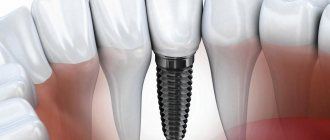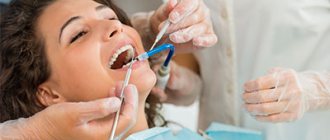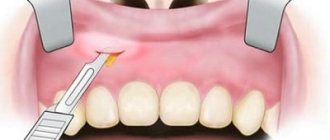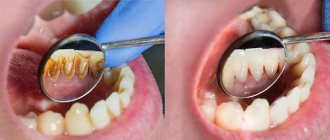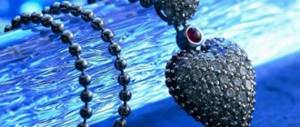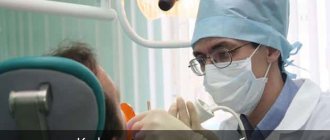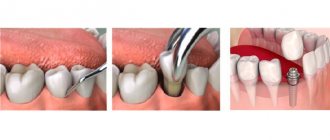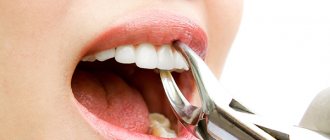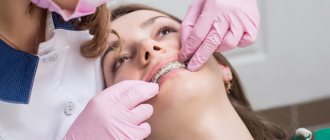There are plenty of reasons why you can lose a completely healthy tooth in our lives. In adults, the face, and along with it the jaws, are often injured in road accidents, as a result of falls, bad habits, and sometimes attempts to sort things out by force. Even more “opportunities” open up for children who love active games on playgrounds and sports grounds. In dentistry, this situation is usually called tooth dislocation.
Practice shows that many erudite adults get lost in such situations and don’t know how to behave. Meanwhile, you can save a tooth if you get an appointment with a dentist within an hour.
What to do if an adult or child knocks out a tooth?
Usually the front teeth that have one root and are easily torn off from the base are knocked out. The incisors of the upper jaw are mainly affected. Depending on the strength of the mechanical impact and the individual characteristics of the dental system, different symptoms may occur.
- With a strong blow to the dental crown, complete dislocation occurs: the tooth falls out of the socket and ends up on the floor or ground. In its place, a bleeding hole remains, in which a blood clot quickly forms. Soft labial tissue is often damaged.
- Incomplete dislocation is characterized by displacement of the crown from its normal position. It doesn’t go beyond the row, but it starts to hurt and stagger. In this case, the tooth root may become bent and stop developing. Hemorrhages and bruises are often observed in the soft tissue area.
- If mechanical impact occurs on the cutting edge of the tooth, the crown may be partially or completely immersed in the alveolus and embedded in the jaw bone tissue. Visually, there is a shortening of the tooth or its complete hiding in the bone.
Even if a child knocks out a baby tooth, only a specialist can assess the severity of the problem. You should not hope that a permanent one will soon grow in its place. The victim, along with the tooth found at the scene of the incident, must be taken to the dental clinic as quickly as possible. In this case, the clinic must admit the patient out of turn.
Doctor's actions in the clinic
If the parents manage to bring in a broken tooth, the dentist performs hygienic treatment of the oral cavity, puts the tooth in its original place and fixes it. If a tooth is missing, cosmetic restoration is performed using photocomposite materials, a crown or a prosthesis, which replace the missing part of the tooth. When the child grows up and reaches adulthood, dental implantation can be performed.
Pediatric dentists at our clinic are professionals in aesthetic restoration of children's teeth. We carry out procedures taking into account the structural features of the child’s jaw, so that in the future it will form correctly. Thanks to the latest dental equipment of the clinic, we can restore teeth that have been destroyed almost below the gums - so that the new ones are indistinguishable from the real ones.
What to do with a knocked out tooth?
A “lost piece” that has fallen into snow, mud or autumn slush can only be rinsed with water, but cannot be scraped and cleaned “to a mirror shine” so as not to damage the still living fibers. For the same reasons, you should pick up the tooth by the crown, and not by the root, which will be re-engrafted into the hole. Disinfection of living tissue with alcohol or hydrogen peroxide is also prohibited.
After dislocation, the tooth should be kept in a moist environment, which will significantly increase its chances of replantation and healing. How to achieve this?
- The best natural medium that supports the vitality of a lost tooth is saliva. Therefore, the tooth can be placed in the mouth, on the opposite side from the damaged side, tucked between the cheek and gum. When a baby tooth is dislocated, a child may scream and cry. To prevent the tooth from being swallowed, its transportation can be handled by an accompanying relative—preferably the mother.
- Perhaps the adult victim or those around him have a container for storing contact lenses. The tooth can be placed in the saline solution it contains.
- A small container filled with water or milk will also work.
- If there is a pharmacy in the neighborhood, you can buy any drug that represents a physiological environment - glucose, 0.02 percent furatsilin, novocaine, etc.
Complete dislocation of primary teeth
In cases where a child has knocked out baby teeth, their replantation is not provided. After the examination, the dentist must take an x-ray to make sure there is no damage to the alveolar process or impacted dislocation. In the latter case, the tooth goes into the bone plate or the rudiment of the future molar.
In addition to visiting a doctor immediately after receiving an injury, you will need to undergo a dental examination several more times, after a week and a month, respectively, and also after 6 and 12 months from the date of tooth loss. In each case, an x-ray is also taken to monitor possible deviations in the formation of the molar.
What to do in such a situation
The problem of a missing tooth in cases where there are still several years left before the eruption of molars turns out to be very serious, and it has its own reasons. An orthodontist must carry out an examination after the wound in the gum has completely healed.
When eating, the chewing load is evenly distributed between all the teeth involved in the process, but in the absence of one or more teeth, an imbalance occurs and uneven loads are formed. As a result, teeth are much less resistant to caries.
In addition, the presence of emptiness automatically leads to a gradual displacement of the teeth towards the free space. The result of this phenomenon is often incorrect teething or deviation of their position from their intended place.
The orthodontist can offer a special children's prosthesis, which is a plate that fills the empty space, but is not inserted into the bone, as in implantology. Such an artificial tooth will not only take on part of the load, but will also prevent real teeth from moving apart.
Do I need to insert a tooth myself?
In case of incomplete dislocation, the crown that protrudes strongly from the gums at the scene of the incident can be carefully inserted into place without applying significant effort. This will prevent complete tooth loss, the likelihood of which is quite high. But you shouldn’t touch a knocked-out baby tooth; it’s better to quickly go to the dentist to identify possible damage to soft tissue and bone.
If a piece of a tooth breaks off, you should rinse your mouth with clean water, try to find the fragment and rush to see a qualified doctor.
If a crown fragment breaks off
Often, when a tooth is fractured, a fragment breaks off, leaving a “stump” with exposed pulp in the mouth. The broken fragment is placed in clean water or saline and brought to the dentist. Almost always it can be returned to its place by making a restoration. In such situations, there is more time than with complete loss of a tooth (from several hours to 2-3 days), but it is better to visit the dentist as quickly as possible to eliminate complications and maintain maximum chances for the fragment to survive.
If a small fragment that does not extend beyond the dentin has been chipped off, it is easier to perform direct restoration: build up the crown and restore its shape using a dental composite.
You have questions?
We will call you back within 30 seconds
+7
What will the dentist do?
The doctor will replace the knocked out tooth or check whether you did it correctly. Then he will fix the tooth with a thin wire (splint) - this is a necessary condition for its further healing. Most patients do not need sutures after replantation. If everything goes well, the tire will be removed in 10-14 days.
At his or her discretion, your doctor may also prescribe you to take antibiotics and vitamins. Antibiotics will help prevent the development of infection, and vitamins will stimulate tissue healing.
Diagnosis of tooth root fracture
Diagnosis of a tooth root fracture is quite difficult, although it would seem that all the clinical signs are obvious. However, no. In the absence of an x-ray, a tooth root fracture can be confused with a tooth dislocation - aching pain, and there may be slight mobility. And in general, during a visual examination, you may not notice any clinical signs, for example, when the root of a tooth is fractured, the crown of the tooth will not always turn pink. Coloring will be observed when the apical third of the root is fractured - this is due to intrapulpal hemorrhage. And even here the statistical figures are not unambiguous, and changes in the color of the tooth root during a tooth root fracture are recorded on average in 30% of patients.
Even such basic diagnostic methods as palpation along the transitional fold, palpation along the alveolar process, vertical and horizontal percussion will not fully reveal the entire clinical picture. In general, percussion during a tooth root fracture will be painful both at the time of injury and for three weeks after its diagnosis.
Palpation of the alveolar process should be carried out whenever there is a suspicion of a tooth root fracture, because these injuries are often combined. Also, with palpation, you can guess where the fracture line is and whether the fragment is displaced. To do this, place the finger of one hand on the gum on the vestibular side, and with the other hand rock the crown of the tooth with a root fracture. So, the closer the fracture line is to the edge of the crown, the greater the trajectory of the crown’s movement will be. And the more the fragment is displaced, the mobility and trajectory of the crown will also be greater.
For a high-quality diagnosis of a tooth crown fracture, or more precisely to check the viability of the pulp, dentists use electroodontometry, where the condition of the pulp is determined based on indicators in microamperes. It must be remembered that a root fracture is not always accompanied by pulp necorosis.
The main diagnostic method, of course, is x-ray. And it is best to do this in three planes at three different angles (45, 90, 110 degrees) or, if possible, do a CBCT scan. It must be remembered that radiographs taken in the first hours after a tooth root fracture are not always informative due to the tight fit of the fragments. Only after a while the fragments can separate due to the formation of a blood clot. Therefore, it is recommended to take another x-ray. In the picture you can appreciate:
- Divergence of fragments:
- complete fracture (with complete divergence of fragments);
- incomplete fracture (fragments are intact, not separated);
- Fracture line direction:
- transverse;
- oblique;
- longitudinal;
- Fracture line level:
- in the cervical part of the tooth;
- in the middle part of the tooth;
- in the apical part of the tooth;
- “Intraosseous” fractures - inside the alveolar bone with damage to the integrity of the periodontium;
- Fractures are “extraosseous” - outside the alveolar bone without damage to the periodontium.
From the image, as I wrote above, you can determine the direction of displacement of the fragment. So, if a fragment of the tooth root has shifted either vestibularly or orally, then this is accompanied by a decrease in the size of the crown of the causative tooth; When a tooth root fragment is displaced in the occlusal direction, it will be noticeable on the radiograph that the crown of the damaged tooth and the adjacent healthy uninjured tooth will be at different levels.
There is also such a thing as a comminuted fracture. This is a fracture in which there are more than three fragments, which are separated from each other by fracture lines of different directions (that is, a combination of several directions). And most often, such comminuted fractures are extremely difficult to diagnose and can only be done after a long period of time, when the gap is filled with connective tissue.
Treatment for crown fracture
If the root is damaged or the tooth is deeply embedded in the gum, it must be removed. Sometimes when there is a fracture, it flies out on its own and leaves an oozing hole. After the bleeding stops, you should not rinse your mouth for 24 hours so as not to wash out the blood clot. But at home, parents should carry out certain treatment:
- Treat the gums with an antiseptic solution of soda, use the drug Chlorhexidine, Miramistin or Stomatofit for disinfection. Using a cotton swab, wipe the gums and inner surface of the cheeks, trying not to touch the socket.
- Every other day, an application of Solcoseryl cream is applied to the wound, which accelerates its healing and regeneration of mucosal tissue. For children over 5 years old, Cholisal and Levomekolev ointment with an anti-inflammatory effect can be used.
- Hematoma and swelling go away faster when applying a product with heparin or troxerutin (Troxevasin gel, Trombex).
In some situations, dentists recommend installing a temporary implant that will prevent thinning of the dentition. This will help prevent curvature and tilting of adjacent molars, and will eliminate the defect and problems with the pronunciation of hissing sounds.
Signs and symptoms of a broken jaw
“Don’t get into a fight,” “get away quickly,” or “punch him in the nose, like that guy from the movie about the FSB” – in practice, these tips do not always work, and the maxillofacial apparatus takes the entire blow.
How can you tell that your jaw is broken, except that it hurts terribly and the cute dimple on your cheek is hidden under a burgundy-blue hematoma? First, calm down and pay attention to the following symptoms:
- the mouth does not close at all or “somehow differently” than you are used to;
- numbness is felt as a result of damage to the lateral nerve;
- the jaw dropped and the facial expression lost its “deep meaning” and “the stamp of a philosopher” - this is already a sign of a bilateral fracture.
Even an experienced plastic surgeon cannot put everything in place on his own, so don’t touch your jaw and try to remember where the nearest city hospital is.
Along the way, take with you a large towel or a piece of any clean cloth: with a jaw fracture, increased salivation and bleeding are observed. You shouldn’t leave these traces of the “Battle of Borodino” in the car of a good-natured car enthusiast who agreed to give you a lift to the emergency room.
How to help a person with a broken jaw?
It may happen that your participation and help is needed by an acquaintance and not quite a person. Which, moreover, will be unconscious. And here is the algorithm for your actions in this case:
- Lay the victim on his side.
- Free his mouth from saliva and blood.
- If your nose is bleeding, do not raise your head. It is better to apply a handkerchief soaked in cold water to the bridge of your nose.
- If there is bleeding from the mouth, use your thumb to pinch the carotid artery on the injured side.
In this position, your “patient” must remain until the ambulance arrives, or be transported to the nearest hospital department.
Treatment Options for Jaw Fractures
At the emergency room, the first thing you will be sent for is an x-ray, because jaw fractures have a broad classification: straight, splintered, multiple, double, etc. After the final verdict is made, the surgeon will give an anesthetic injection, compose fragments of bone tissue and fix them.
And here the fun begins: the upper and lower jaws are connected using special splints, so that in the next 3-4 weeks you can expect oatmeal, ground soup and complete silence.
For fixing the jaws, there are also devices without binding, but they are all bulky, extra-oral and cause a lot of inconvenience to a person. In short, settle for regular splinting and prepare mentally for the stage called “fossil development.” Because in 21 days of “complete silence” you will have to learn to speak, chew and crack seeds all over again.
This is interesting: Why white spots appear on teeth: possible causes in adults and children, methods of elimination
